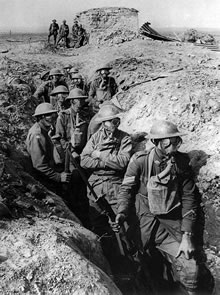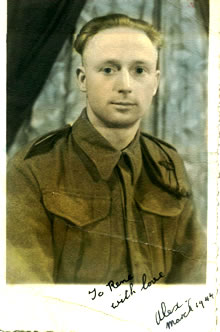The Moores
The earliest Moore I've identified was Thomas Moore - probably born between 1780 and 1790. His wife's name was Ann, probably about the same age. They had a son called Adam.
Adam Moore
Adam James Moore was born in Westminster on 12 July 1810 and was baptised on 11 October 1810 at St Clement Danes Church - probably. It is possible that I've mixed together two Adam Moores, both born in Westminster in 1810. I'm not sure how to resolve this one.
Adam was married to Anne Jenks on 13 March 1833 in St Luke's Church, Sydney Street, Chelsea. Historical trivia: three years later (2 April 1836) Charles Dickens married Catherine Hogarth in the same church - two days after the publication of the first part of Pickwick Papers. Well, fancy that.

The next record of them is at the 1851 census, when they where living at 21 Upper Brook Mews (now Upbrook Mews), Paddington (just off the Bayswater Road at Lancaster Gate). Adam and Ann are 37, and at home is John 17, Robert 7 and Jane M 2. Adam is described as 'Stone Sawyer' and his son John as 'Stone Mason'. So was Sawyer a more senior job than Mason? It must have been.
At the next census in 1861, Adam and Ann are at 6 Bristol Gardens, Paddington. John has left home but Robert 17 and Jane 12 are still there, with Samuel aged 7.
1871 and they're at 82 Portsdown Road (from 1939, called Randolph Avenue). Adam is an unemployed Stone Sawyer, Robert 26 is a painter, Jane Moore 22 is an unemployed domestic servant and Samuel is an office messenger.
In 1881, the census shows them living at 40 Portsdown Road, Paddington- Stone Sawyer Adam and Ann, with Post Office Letter Carrier Samuel, now aged 27 - about time he found a lady friend, don't you think? (but then again, maybe he had plenty).
At the 1891 census, Adam and Annie are at 144 Kilburn Park Road, Willesden - aged 77. Adam describes himself as 'Stone Mason' - was he still working? I suppose he was. Samuel has finally left home.
Location, Location, Location
Take a look at Adam Moore's progress on Googlemaps. Gradually inching north-westerly, away from the river. Why was he moving that way?
One thing that may have influence the first move away from Westminster - the stench. That move was pre-1850, so pre-dates the 'Great Stink' of 1858.
"In 1815 house waste was permitted to be carried to the Thames via the sewers, so for seven years human waste was dumped into the Thames and then potentially pumped back to the same households for drinking, cooking and bathing. Prior to the Great Stink there were over 200,000 cesspits in London. Emptying one cesspit cost a shilling - a sum the average London citizen then could ill afford. As a result, most cesspits added to the air-borne stench.
Part of the problem was due to the introduction of flush toilets, replacing the chamber-pots that most Londoners had used. These dramatically increased the volume of water and waste that was now poured into existing cesspits. These often overflowed into street drains originally designed to cope with rainwater, but now also used to carry outfalls from factories, slaughterhouses and other activities, contaminating the city before emptying into the River Thames"
There was also the Cholera problem:
"Cholera became widespread during the 1840s (not least because many people believed the disease was due to air-borne "miasma"; no one then realized that the disease was water-borne - that discovery was not made until 1854 by London physician Dr John Snow after an epidemic centred in Soho), and sanitation reform soon became a high priority."
Dr Snow's method of testing his hypothesis (that the disease spread via drinking sewage-polluted water) was to remove the handle from a street-pump in Broad Street Soho. The outbreak subsided, the experiment was hailed a success - people in the area stopped dying of cholera. Maybe that was because the people were dying of dehydration instead...
Whatever, Adam getting himself north of Hyde Park by 1851 seems like a very sensible move.
Robert Moore
Aged 26, Robert married just after the 1871 census, to Emma Jane Bevis - living at 19 Clifton Gardens, Paddington (less than a three minute walk from his dad's place in Portsdown Road). The witnesses were Robert's dad Adam, and Christina Mason - who she, some friend of Emma's maybe?
The 1881 census has Robert now with his young family, at 83 Cambridge Road Willesden (almost next door to Kilburn Park Road):
- Robert G 1873
- Walter 1874
- Ellen (Emma?) E 1876
- Sidney 1877
- Frank 1881
Then in 1891 Robert G and Walter are no longer around, leaving; Emma (Ellen?), Sydney, Frank and more recent arrivals, at 126 Kilburn Park Road Willesden (with his 77-year-old mum and dad, Adam and Annie, at 144 Kilburn Park Road):
- John 1883
- George 1885
- Charles Ernest 1884
- Annie 1891
10 years later, only John, George Charles and Annie are still at home. John is a painter's labourer (ie helping his dad), George is a commercial clerk and Charles aged 15 is an office boy.
Robert Moore senior died some time between 1901 and 1911. By the 1911 census, John, George and Annie had left home leaving Emma Jane with her son Charles Ernest at 194 Portnall Road, Paddington. (Just off Kilburn Lane, a mile and a half from Lushington Road)
Emma Jane died later that year, aged 64. Charles Ernest had to move on.
Charles Ernest Moore
World War 1 started in August 1914 - sort of. Much more importantly, to my existence at least, Charles Ernest Moore married Ethel Maud Snell on 8 October. It seems that, after the death of his mother, Charles had become a lodger at the family home of the Snells. Being the perfect lodger, he had looked after the needs of the Snell's daughter, Ethel - with the usual consequences. Their marriage was a just-in-time affair - their daughter Marjorie arrived first quarter, 1915. His son, my father, was born on 21 December 1916.
 Charles Ernest signed up with the 9th Battalion, Middlesex Regiment. This is odd - 9th Battalion was formed at the Drill Hall, Pound Lane, Willesden Green on 4 August 1914 and was sent to India at the end October 1914. From there they went to Mesopotamia and then to Basra on 24 November 1917. They didn't take part in any major actions. They certainly weren't on the Western Front.
Charles Ernest signed up with the 9th Battalion, Middlesex Regiment. This is odd - 9th Battalion was formed at the Drill Hall, Pound Lane, Willesden Green on 4 August 1914 and was sent to India at the end October 1914. From there they went to Mesopotamia and then to Basra on 24 November 1917. They didn't take part in any major actions. They certainly weren't on the Western Front.
So, I guess Charles signed up after they left for India - he presumably would not have signed up until after the birth of Marjorie.
I've found some answers, but just for the moment I've lost the Internet references. It seems Charles must have agreed or volunteered to transfer into the 2nd Battalion, Queen's Royal Surrey Regiment, about to embark for the action in France. It also seems that Ethel was not aware of her husband's change of Regiment, as my father's birth certificate claims Charles was still in the Middlesex Regiment.
However he arrived there, Private C E Moore died of wounds on 19 Jan 1917. The Etaples Military Cemetery is the final resting place for over 10,000 casualties from Etaples and the surrounding area. There were 16 hospitals and a convalescent depot at Etaples, so it is quite likely that Charles was injured on the Somme and was transported back to Etaples for treatment. Given the conditions in hospitals during WW1, he may well have succumbed to infection, rather than the original wounds.
 My Dad: Stanley George Moore, REME, Alexandria Egypt 1944
My Dad: Stanley George Moore, REME, Alexandria Egypt 1944
Stanley George Moore was born on 21 December 1916 at 2 Lushington Road - the Snell's family home - four weeks before his father's death. Charles's war graves certificate gives his address as 101 Buchanan Gardens, but Ethel was staying with her mother. It seems likely that she stayed on at the Snell's house to help look after the baby and toddler Marjorie.
Ethel died in May 1933 aged 44 - her dad George bought a plot in Alperton Cemetary for her, himself and his wife. So my dad was orphaned aged 16. George lasted another 5 years, dying in May 1938 - leaving everything to his wife - who died 5 days later. The house at 2 Lushington Road was bequeathed to my dad and his sister Marjorie.
Stanley's first-born - my sister Jan - was born at 2, Lushington Road on 9 November 1946.
At some time unknown, Stanley and his sister Marjorie inherited 2 Lushington Road. (UPDATE: A friendly chap from the Land Registry Office in Wales has just told me that it was first registered to Stanley and his sister Marjorie Elsie Moore on 10 August 1939). They shared the big house: my dad and mum on the first floor, Marjorie and her nere-do-well husband Nelson Lord downstairs. The situation was untenable. By the time of my birth, 27 September 1948, Stanley and family had moved out - to 125 Clifford Gardens. They had to walk away from my dad's inheritence, 2 Lushington Road. Nelson Lord had no money to buy it but was a sitting tenant, so the poperty was unsaleable. About a year later I think, we move to 25 Alicia Gardens - bought with a mortgage that caused my dad to have many sleepless nights, I was told.
So why did Stanley Moore inherit the house from the Snells? As there were three Snell daughters, why did it flow down the Ethel Maud line, instead of being shared between them? Presumably because Stanley and Marjorie were now orphans, their parents having died aged 29 (Charles) and aged 44 (Ethel).
